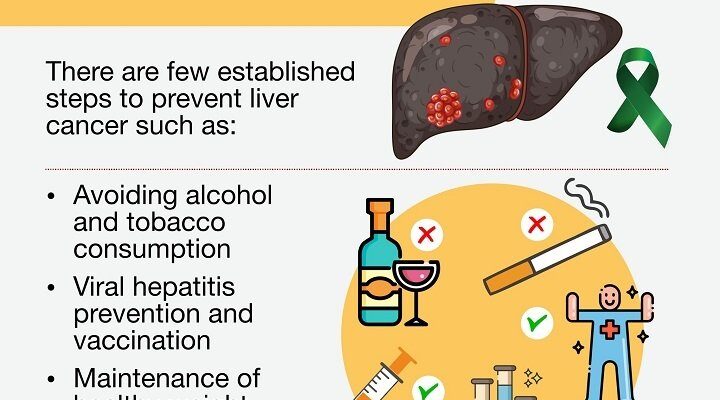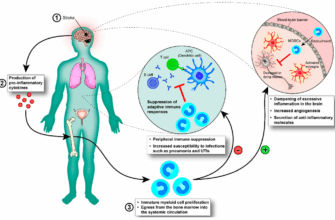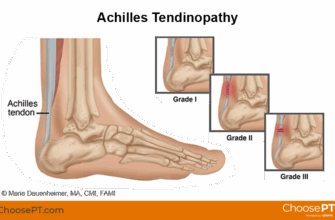Liver cancer, once considered a rarer affliction, is rapidly climbing the ladder of global health concerns, threatening to become an even more formidable opponent in the coming decades. However, a landmark report from the prestigious Lancet Commission on Liver Cancer offers a beacon of hope: a significant majority — a staggering three out of five cases — are entirely preventable. This isn`t merely a medical observation; it`s a stark call to action for individuals and policymakers worldwide.
- The Liver`s Silent Battle: A Looming Crisis
- The Culprits Unveiled: Understanding the Preventable Factors
- 1. The Expanding Waistline and the Fatty Liver
- 2. The Liquid Culprit: Alcohol Consumption
- 3. The Viral Villains: Hepatitis B and C
- A Blueprint for Prevention: Policy and Personal Responsibility
- A Glimmer of Hope: Lessons from Success
- The Road Ahead: A Collective Responsibility
The Liver`s Silent Battle: A Looming Crisis
As the body`s largest internal organ, the liver performs hundreds of vital functions, from detoxification to nutrient processing. When it falters, the consequences are profound. Liver cancer currently stands as the sixth most common cancer globally and tragically, the third leading cause of cancer-related deaths. The projections are grim: without urgent, concerted interventions, the number of new cases is expected to nearly double from 870,000 in 2022 to a staggering 1.52 million by 2050. Deaths are forecast to rise comparably, from 760,000 to 1.37 million in the same period.
The geographical distribution of this burden is particularly telling. While China currently accounts for over 40% of global liver cancer cases, largely due to historical rates of Hepatitis B, the highest projected growth is anticipated in Africa. This underscores a global challenge with localized nuances, demanding tailored yet universal preventive strategies.
“Liver cancer is becoming an increasingly serious global health problem. It is one of the most challenging cancers to treat, with five-year survival rates varying from around 5% to 30%. We risk seeing nearly a doubling of liver cancer cases and deaths over the next quarter-century if urgent action is not taken to reverse this trend.”
— Professor Jian Zhou, Fudan University, China.
The Culprits Unveiled: Understanding the Preventable Factors
The Lancet Commission meticulously identified the primary drivers behind this epidemic, highlighting key areas where lifestyle and public health interventions can make a monumental difference.
1. The Expanding Waistline and the Fatty Liver
In an age where convenience often outweighs nutritional wisdom, our collective waistlines are expanding, and with them, a burgeoning threat to our livers. Metabolic Dysfunction-Associated Steatotic Liver Disease (MASLD), previously known as non-alcoholic fatty liver disease, is now one of the fastest-growing causes of liver cancer. It`s essentially fat accumulation in the liver, a condition estimated to affect a third of the global population. While MASLD itself may not always lead to cancer, a significant subset progresses to Metabolic Dysfunction-Associated Steatohepatitis (MASH) — an inflammatory form that carries a much higher risk.
The solution, while seemingly simple, requires significant societal and individual shifts: balanced nutrition, regular physical activity, and weight management. The commission projects that the proportion of liver cancers linked to MASH will rise from 8% in 2022 to 11% by 2050, emphasizing the urgent need to address the global obesity crisis.
2. The Liquid Culprit: Alcohol Consumption
Alcohol-related liver disease remains a significant contributor to liver cancer, and its prevalence is, regrettably, on an upward trajectory. Forecasts suggest alcohol`s share in liver cancer cases will increase from 19% in 2022 to 21% by 2050. The message is clear: reducing alcohol intake, particularly excessive consumption, is a direct pathway to liver protection.
3. The Viral Villains: Hepatitis B and C
While the focus is shifting towards metabolic and alcohol-related causes, viral hepatitis B and C have historically been major drivers of liver cancer. These viruses cause chronic inflammation that, over time, can lead to cirrhosis and cancer. Encouragingly, thanks to vaccination campaigns and improved screening, the proportion of cases linked to Hepatitis B is expected to slightly decline from 39% to 37% by 2050, and Hepatitis C from 29% to 26%. This progress underscores the immense power of established public health interventions.
“Once considered to primarily occur in patients with viral hepatitis or alcohol-related liver disease, today, rising obesity rates are an increasing risk factor for liver cancer, primarily due to increases in excess fat around the liver.”
— Professor Hashem El-Serag, Baylor College of Medicine, USA.
A Blueprint for Prevention: Policy and Personal Responsibility
The Lancet Commission outlined actionable recommendations that, if implemented, could prevent between 9 and 17 million new liver cancer cases and save 8 to 15 million lives by 2050. This isn`t just wishful thinking; it`s a meticulously calculated strategy:
- Strengthen Vaccination Programs: Universal Hepatitis B vaccination for children and comprehensive screening programs for adults.
- Implement Economic Disincentives: Introduce minimum pricing on alcoholic beverages and impose taxes on sugary drinks to combat obesity.
- Mandate Warning Labels: Clear, impactful warning labels on alcohol and sugary products, mirroring successful strategies used for tobacco.
- Invest in Early Detection: Direct resources towards identifying liver damage and cancer at their earliest stages, when treatment is most effective.
- Enhance Palliative Care: Improve care for patients already suffering from the disease, ensuring dignity and quality of life.
The consensus among experts is striking. Professor Valerie Paradisi of Beaujon Hospital, France, emphasizes the “urgent need to raise public awareness” about the escalating problem, noting that “compared to other cancers, liver cancer is very difficult to treat but has more pronounced risk factors that help define specific prevention strategies.”
A Glimmer of Hope: Lessons from Success
It`s not all grim forecasts and dire warnings. History provides a beacon of hope. Dr. Matt Hoare, from the University of Cambridge`s Early Cancer Institute, points to Japan as a prime example. Through robust preventive measures and enhanced early detection methods, Japan has successfully reduced its liver cancer mortality rates. This demonstrates that strategic public health policies can indeed turn the tide.
Furthermore, the scientific community continues its relentless pursuit of advanced solutions. Researchers are exploring novel methods, such as liver DNA sequencing, to identify individuals at high risk even before overt symptoms manifest, paving the way for even earlier intervention.
The Road Ahead: A Collective Responsibility
The rising tide of liver cancer is a formidable challenge, but one that is largely within our grasp to control. The Lancet Commission`s report is a sobering reminder of the consequences of inaction, yet an empowering affirmation of the power of prevention. By addressing the burgeoning obesity crisis, moderating alcohol consumption, and diligently pursuing viral hepatitis vaccination and screening, we can collectively steer the narrative away from escalating mortality and towards a future of healthier livers.
The path to healthier livers, and indeed, healthier lives, is not shrouded in mystery. It demands a clear vision, resolute policy, and a touch of personal discipline – perhaps less of that late-night pizza, and a bit more proactive engagement with our health. The liver, after all, deserves our best defense.








